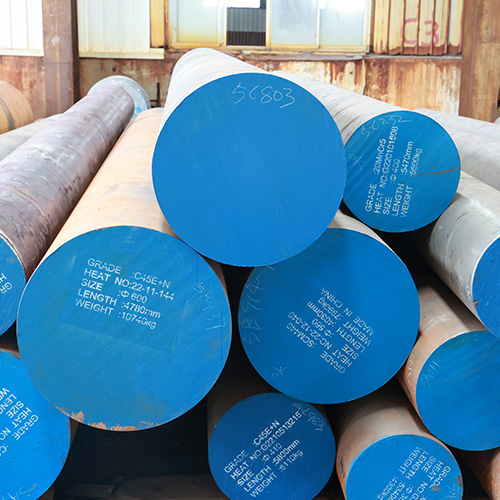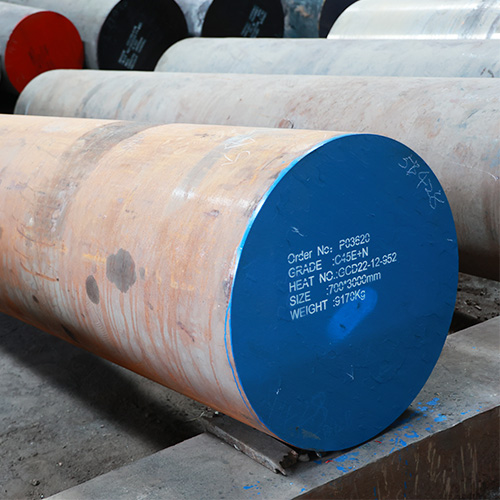Introduction

Steel 1045, a medium-carbon steel, has long been a cornerstone of the manufacturing industry due to its exceptional balance of strength, toughness, and machinability. This versatile material finds applications across a wide spectrum of industries, from automotive components to construction structures. In this comprehensive blog post, we will delve into the diverse applications of 1045 steel, exploring why it remains a preferred choice for engineers and manufacturers worldwide.
Understanding Steel 1045: A Closer Look
Steel 1045 is a carbon steel alloy characterized by its precise carbon content, typically ranging from 0.43% to 0.5%. This carbon composition is what imparts 1045 steel with its desirable mechanical properties. Its unique combination of strength, toughness, and machinability makes it a highly versatile material, suitable for a broad range of applications.
Key Properties of Steel 1045:
- High Strength-to-Weight Ratio: Steel 1045 offers an impressive strength-to-weight ratio, making it an ideal choice for applications where weight reduction is critical. This property is particularly valuable in industries such as automotive, aerospace, and construction.
- Excellent Machinability: The precise carbon content in 1045 steel ensures excellent machinability, allowing for easy cutting, drilling, and shaping. This characteristic significantly reduces manufacturing costs and time, making it a preferred material for a wide range of components.
- Good Weldability: Steel 1045 is readily weldable, facilitating the joining of different parts or components. Its weldability is essential in applications where complex structures or assemblies are required.
- Relatively Low Cost: Compared to many other alloy steels, 1045 steel is relatively cost-effective, making it an attractive option for various industries. This affordability contributes to its widespread use.
The Manufacturing Process of Steel 1045
The production of 1045 steel involves a multi-step process that begins with the extraction of iron ore from the earth. The ore is then processed to obtain iron, which is subsequently combined with carbon and other alloying elements in a furnace to create molten steel. This molten steel is then shaped into various forms, such as billets or slabs, through a process called hot rolling. Finally, the hot-rolled products undergo cold finishing to achieve the desired dimensions and properties.
Key Applications of Steel 1045
Steel 1045 finds applications across a diverse range of industries, where its unique properties are valued. Some of the most prominent applications include:
- Automotive Industry: 1045 steel is a staple material in the automotive industry, used to manufacture critical components such as gears, shafts, connecting rods, and suspension parts. Its combination of strength, toughness, and machinability makes it well-suited for these demanding applications.
- Construction Industry: In the construction sector, 1045 steel is used for structural elements, fasteners, and tools. Its durability and strength ensure the longevity and safety of buildings and infrastructure.
- Machinery and Equipment: Steel 1045 is a popular choice for manufacturing machine parts, bearings, and gears due to its excellent wear resistance and mechanical properties.
- Agriculture: In the agricultural industry, 1045 steel is used to fabricate implements, tools, and machinery that withstand the rigors of outdoor use.
- General Engineering: 1045 steel is a versatile material used in general engineering applications, where its properties meet the requirements of various custom-made components.
Comparison of Steel 1045 with Other Steel Grades
To better understand the unique characteristics of 1045 steel, it is helpful to compare it with other steel grades. The following table provides a simplified comparison based on key properties:
| Steel Grade | Carbon Content | Strength | Toughness | Machinability | Weldability |
|---|---|---|---|---|---|
| 1018 | 0.18% | Low | High | Excellent | Excellent |
| 1045 | 0.45% | Medium | Medium | Good | Good |
| 4140 | 0.40% | High | High | Good | Fair |
Note: This table provides a general comparison, and actual properties may vary based on specific manufacturing processes and heat treatments.
Heat Treatment of Steel 1045
The properties of steel 1045 can be further tailored through heat treatment processes. These processes involve heating the steel to a specific temperature and then cooling it at a controlled rate to achieve desired characteristics. Common heat treatments for 1045 steel include:
- Annealing: This process softens the steel, improving its machinability and reducing its hardness.
- Quenching and Tempering: This treatment increases the hardness and strength of steel 1045, making it suitable for applications requiring high wear resistance.
- Normalizing: Normalizing refines the grain structure of 1045 steel, improving its toughness and uniformity.
Advantages and Disadvantages of Using Steel 1045

Advantages:
- Cost-effective: Steel 1045 is generally more affordable than many other alloy steels, making it a practical choice for various applications.
- Widely available: Due to its popularity and versatility, steel 1045 is readily available from numerous steel suppliers.
- Versatility: Its balance of strength, toughness, and machinability makes 1045 steel suitable for a wide range of applications.
- Excellent machinability: This property reduces manufacturing costs and time.
Disadvantages:
- Limited corrosion resistance: Steel 1045 may require additional coatings or treatments to protect against corrosion in harsh environments.
- Not as strong as high-alloy steels: For applications requiring extreme strength, high-alloy steels may be more suitable.
Conclusion
Steel 1045 is a versatile and widely used medium-carbon steel that offers a compelling combination of strength, toughness, and machinability. Its applications span across various industries, making it a valuable material for engineers and manufacturers worldwide. By understanding the properties, manufacturing processes, and applications of 1045 steel, you can make informed decisions about its suitability for your specific needs.
FAQ
What is the difference between steel 1045 and 1020?
Steel 1045 has higher carbon content, making it stronger and harder than 1020, which is more malleable and easier to machine due to its lower carbon content.
Can 1045 steel be welded?
Yes, 1045 steel can be welded, but preheating and post-weld heat treatment are recommended to avoid cracking due to its higher carbon content.
What is the best heat treatment for steel 1045?
The best heat treatment for 1045 is quenching and tempering. It is typically heated to 800-850°C (1472-1562°F), quenched, and then tempered at a lower temperature to improve toughness.
Where can I buy steel 1045?
You can purchase 1045 steel from various suppliers, including specialized steel distributors, metal service centers, and online platforms like QiLu Special Steel.
